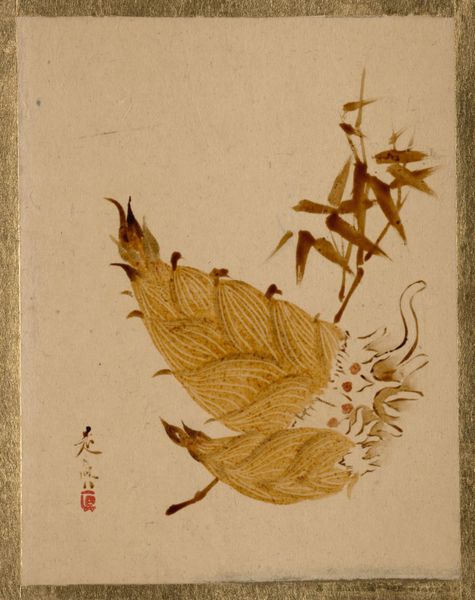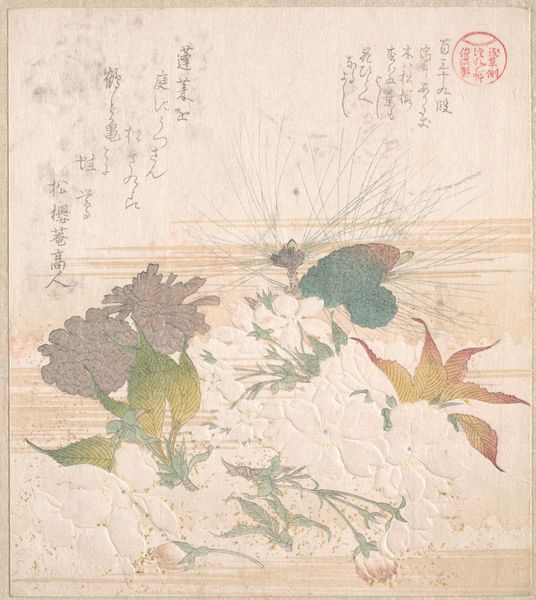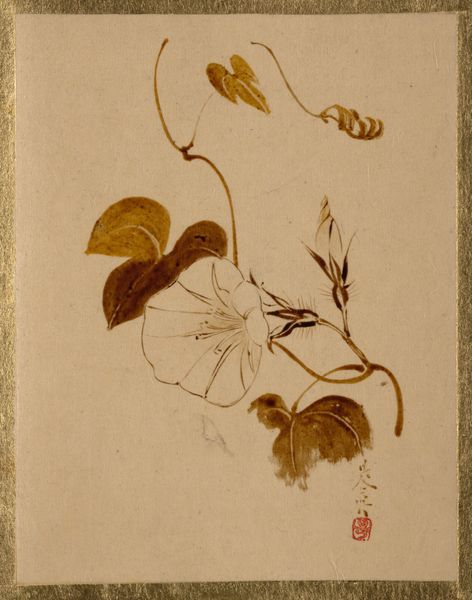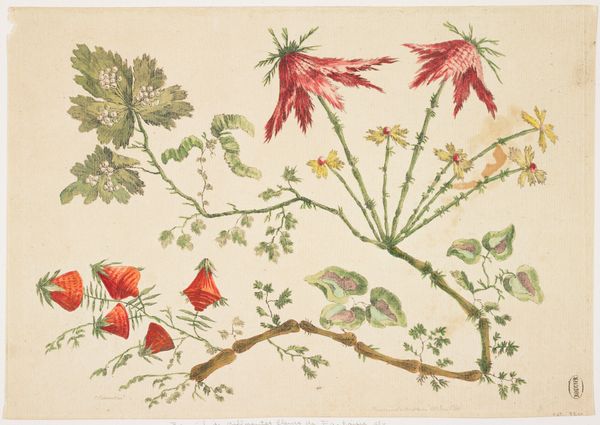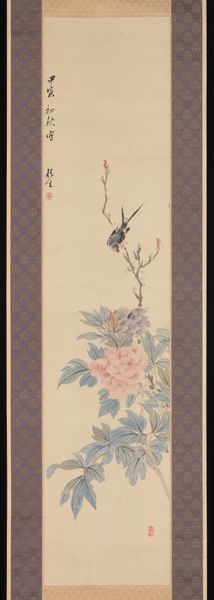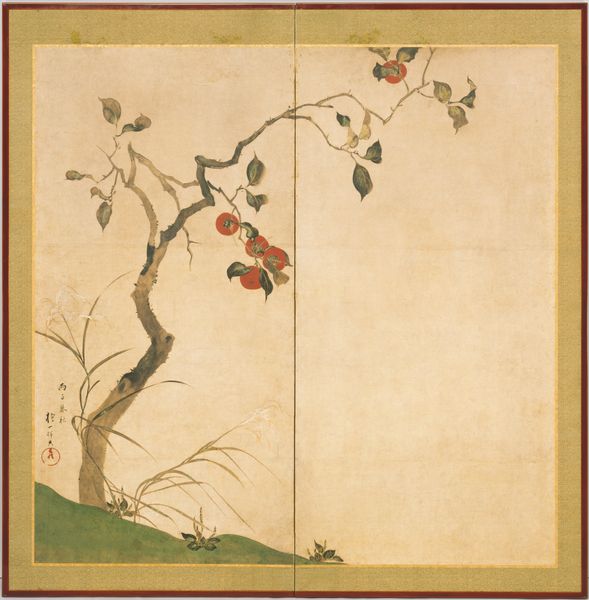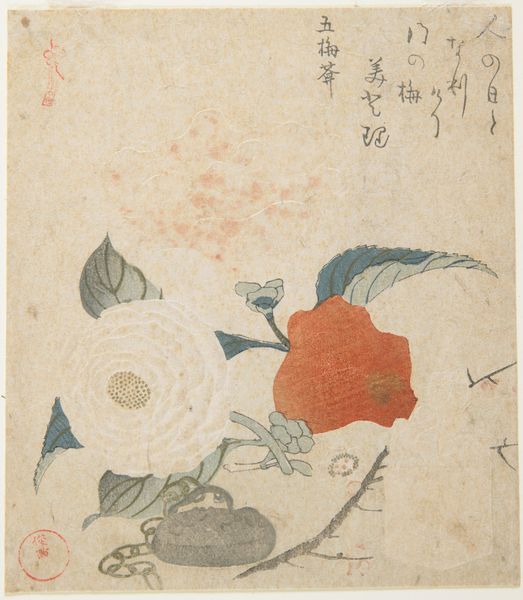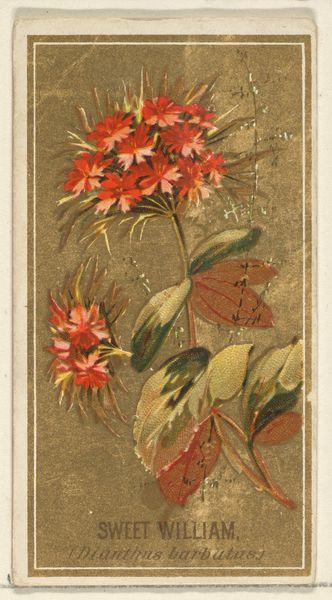
painting, watercolor
#
painting
#
asian-art
#
ukiyo-e
#
watercolor
Dimensions: 4 1/2 x 3 1/2 in. (11.4 x 8.9 cm)
Copyright: Public Domain
Editor: Here we have "Maple Leaves," made sometime between 1807 and 1868 by Shibata Zeshin, and rendered in watercolor. It’s interesting how Zeshin captures the delicate details of each leaf with such precision. How do you interpret this work, particularly concerning its materials and production? Curator: Well, looking through a materialist lens, I see this not just as a pretty image, but as a record of labor, skill, and access to specific materials within a particular social context. What kind of paper is it painted on? How readily available were these pigments, these techniques of applying watercolor? The gold border suggests a certain level of affluence, or perhaps intended use. Was this created for mass consumption, as many ukiyo-e were, or something for a more limited audience? Editor: That's a fascinating point! I hadn't considered the socio-economic aspect of accessing the materials. How does Zeshin's choice of watercolor, in particular, speak to this? Was watercolor a common medium, or a luxury? Curator: Exactly. Watercolor allowed for detailed depiction. Consider also the labor involved in sourcing and processing natural pigments during that time. And Zeshin was particularly known for his lacquer techniques... isn't it curious that he used watercolor here instead? Did this choice influence the perception of the art? Editor: Now that you mention it, that choice does seem significant. So, rather than just appreciating the aesthetic, we should also consider the statement made through the choice of medium itself, and what it tells us about the artist's intention, or the intended audience's status. Curator: Precisely! This shift highlights how objects transmit complex narratives about their production. Examining material choices exposes us to historical dynamics of value, taste, and the hidden realities of artistic creation. Editor: Thanks; this makes me appreciate it much more. Curator: Indeed, by examining the "stuff" of art, we gain insight beyond mere representation.
Comments
No comments
Be the first to comment and join the conversation on the ultimate creative platform.
